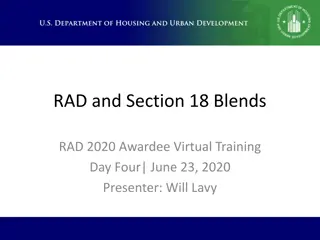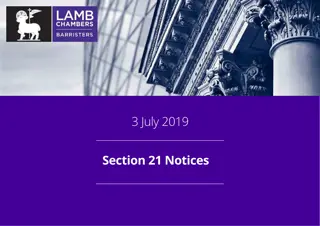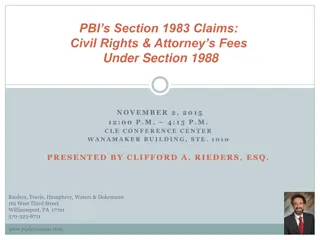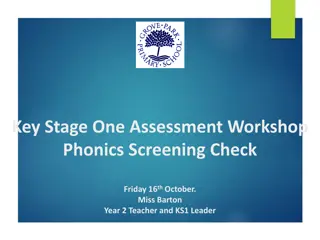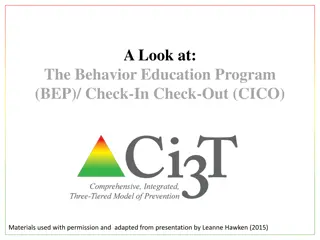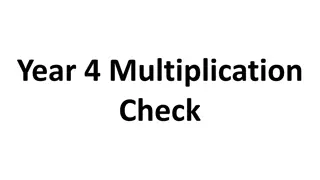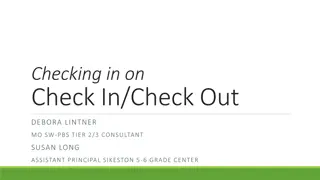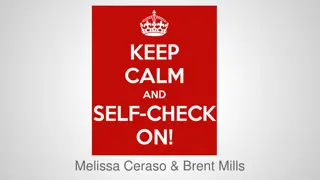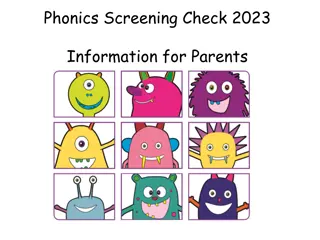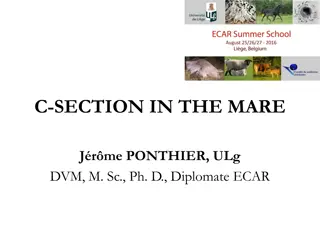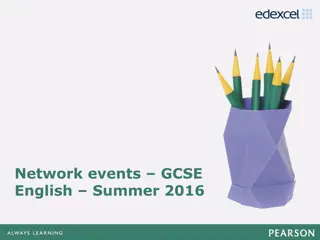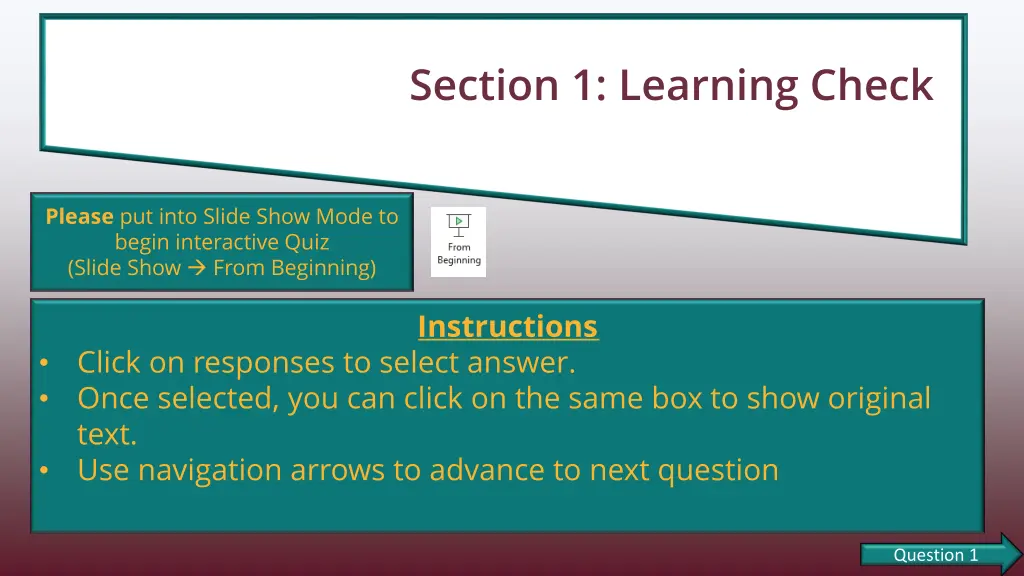
Innovative Assessment Models & ESSA Requirements
Explore the Elementary and Secondary Education Act requirements, through-year assessments, and areas for assessment improvement and innovation. Dive into interactive quiz questions to test your knowledge!
Download Presentation

Please find below an Image/Link to download the presentation.
The content on the website is provided AS IS for your information and personal use only. It may not be sold, licensed, or shared on other websites without obtaining consent from the author. If you encounter any issues during the download, it is possible that the publisher has removed the file from their server.
You are allowed to download the files provided on this website for personal or commercial use, subject to the condition that they are used lawfully. All files are the property of their respective owners.
The content on the website is provided AS IS for your information and personal use only. It may not be sold, licensed, or shared on other websites without obtaining consent from the author.
E N D
Presentation Transcript
Section 1: Learning Check Please put into Slide Show Mode to begin interactive Quiz (Slide Show From Beginning) Instructions Click on responses to select answer. Once selected, you can click on the same box to show original text. Use navigation arrows to advance to next question Question 1 Question 1
Knowledge Check The Elementary and Secondary Education Act, as amended by the Every Student Succeeds Act, requires all of the following EXCEPT for 1 ESSA includes a short provision (ESSA, 1111(b)(2)(B)(viii)) that allows for a state's accountability assessment to "be administered through multiple statewide interim assessments; however, this is not required. accountability assessment administered through multiple statewide interim assessments A all students be taught to high academic standards ESSA requires that all students in America be taught to high academic standards that will prepare them to succeed in college and careers. B ESEA, as amended by ESSA (ESSA; P.L. 114-95), requires that all students participate in annual academic assessments. all students participate in annual academic assessments C Generally, ESSA requires that states establish student performance goals and hold schools accountable for student achievement. educational results accountability systems for districts and schools that are based on D Instructions Next Question Instructions Next Question
Knowledge Check Which one of the following best completes this definition of through-year assessment: A through-year assessment program consists of multiple distinct assessments administered across the school year where information from the multiple assessments is combined to yield a summative determination of student performance to support federally required systems of school identification and support, and 2 This is a use of formative assessment. is used to yield information that strengthens alignment between teaching and learning. A This is a use of through-year assessment. is used to support another purpose or purposes (e.g., logistical, administrative, or monitoring). B This is a use of formative assessment. Identifies which concepts and/or skills students are having difficulty understanding or acquiring C This is a use of interim assessment. Identifies which students will likely score proficient on other future assessments. D Previous Question Next Question Previous Question Next Question
Knowledge Check Which of the following is a desired area for the improvement and innovation of assessment and has implications for a through-year assessment model? (Select all that apply.) 3 More accurate measure of growth, change, and progress It has been argued that longitudinal analyses, instead of just point-in-time analyses, are necessary to achieved desired quality of test scores (e.g., An, Ho, & Davis, 2022). Additionally, spring-to-spring growth, a common practice under ESSA, is prone to attributing summer/seasonal learning loss/gain to schools (e.g., Soland & Thum, 2019). Thus, through-year assessment model could provide a more accurate measure of growth, change, and progress, and it could help to avoid wrongfully attributing seasonal learning loss to schools. A Through-year assessment can accommodate the range of different ways students are exposed to curricula and learn. Assessment can be targeted to student learning needs, and assessment can be integrated into instruction in meaningful ways such that assessment outcomes inform subsequent instructional decisions. Customized measurement and reporting B Alignment of standards and assessments is not limited to through-year assessment. Assessments formative, interim, through-year, summative -- must be aligned to standards in order to measure whether and the degree to which a student has acquired the knowledge, skills, and abilities described by the standards. Aligned standards and assessments C Through-year assessment provides teachers the opportunity to select the content of each test to reflect their instructional scope and sequence, as long as, the tests accumulate to meet certain blueprint requirements. Students have multiple opportunities through the academic year to demonstrate what they know and can do, and this can better correspond to primacy/recency of instruction and learning. More efficient testing D Previous Question Next Question Previous Question Next Question
Knowledge Check 4 One difference between through-year and summative assessment is that through-year assessment Both through-year and summative assessment serve this purpose. evaluates students annual progress and achievement across groups and jurisdictions A Both through-year and summative assessment serve this purpose. determines whether and to what degree students have learned the material taught B Summative assessment focuses on long-term learning goals and objectives/all material covered in a course, program, or school year objectives focuses on short-, intermediate-, and long-term learning goals and C Both through-year and summative assessment serve this purpose. Measures progress toward improvement goals D Previous Question End Previous Question End
You have reached the end of this learning check Please click anywhere to exit! Dadey, N., Gong. B., Kim, Y., & Sato, E. (2024). Through-year Assessment [Digital ITEMS Module 35]. Educational Measurement: Issues and Practice, 43(1), 97-98. https://doi.org/10.1111/emip.12595 Previous Question Previous Question





